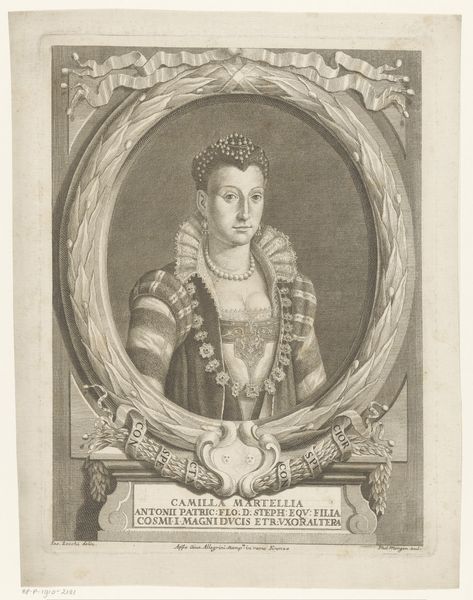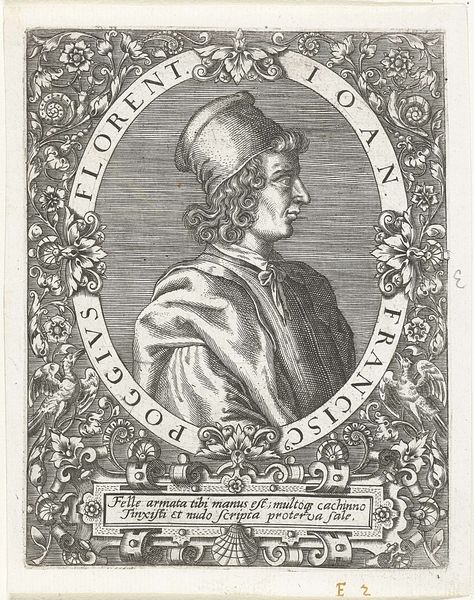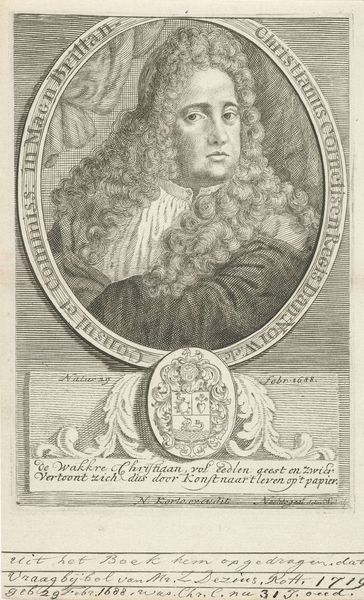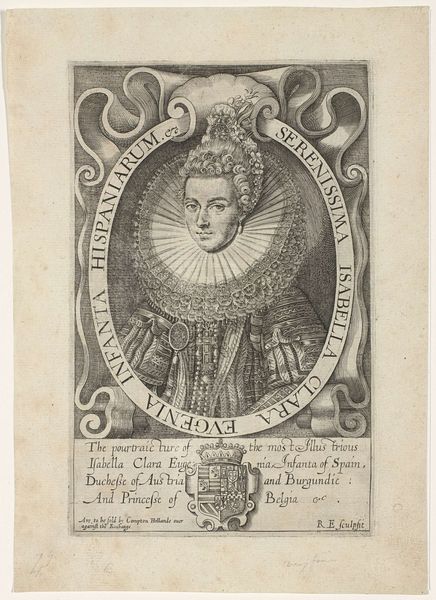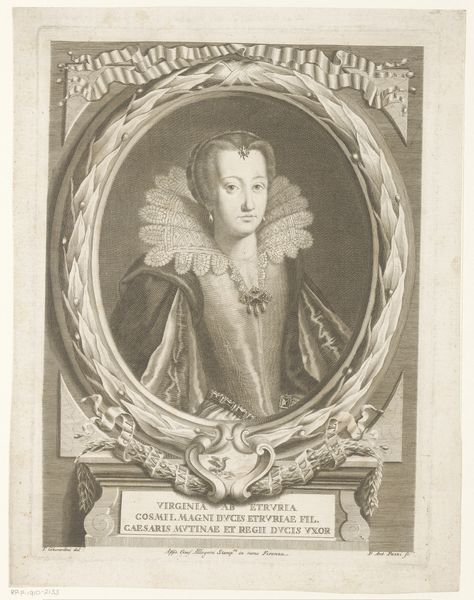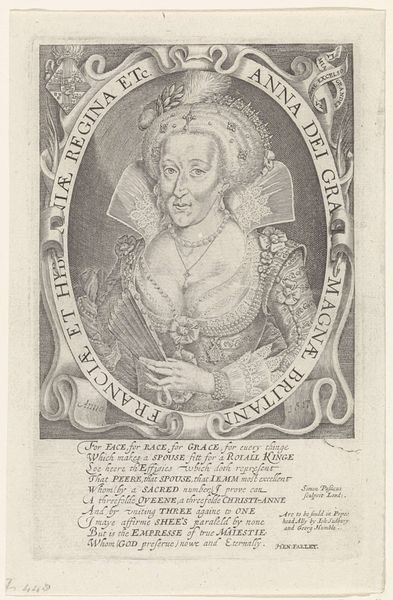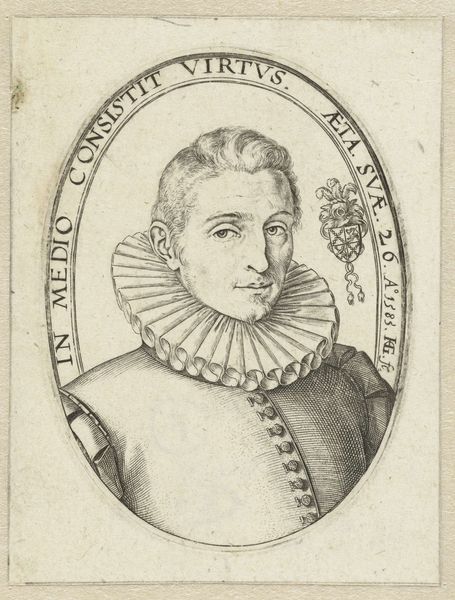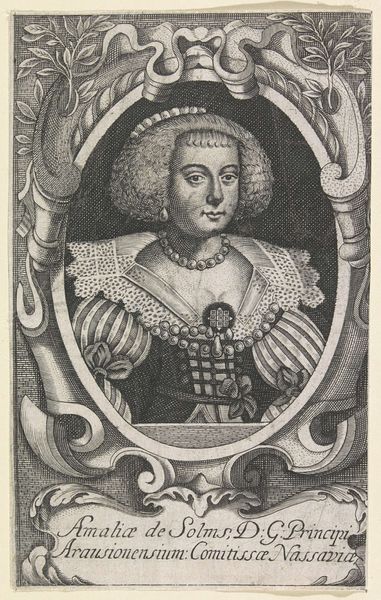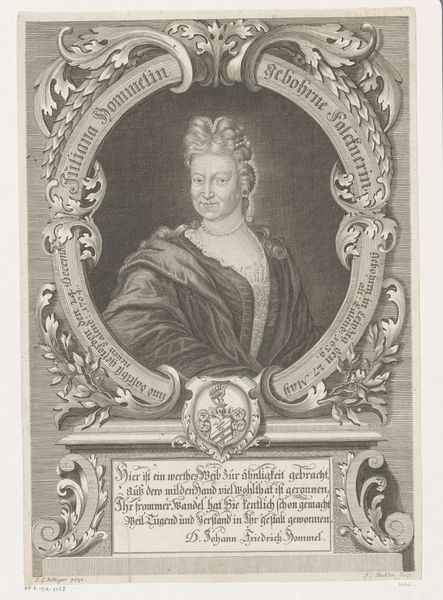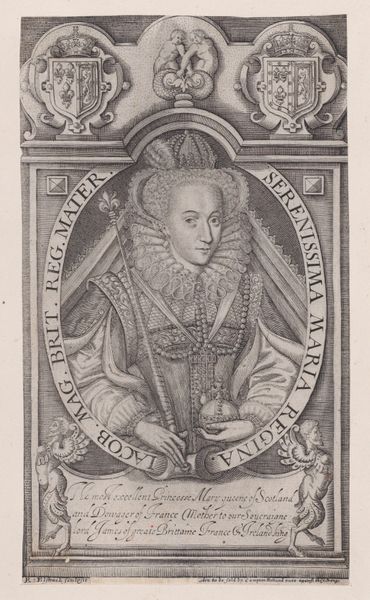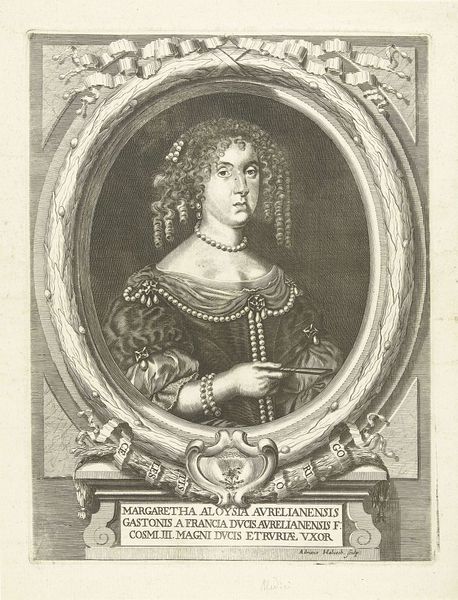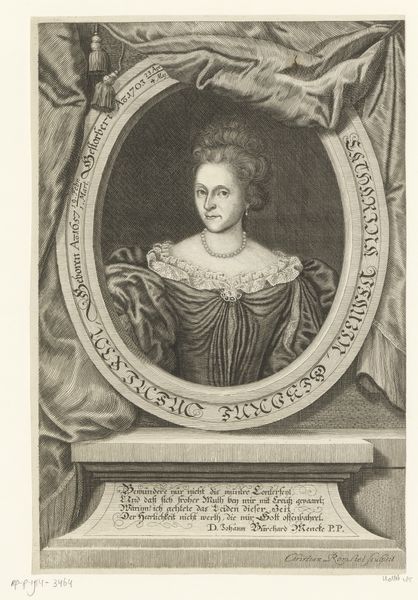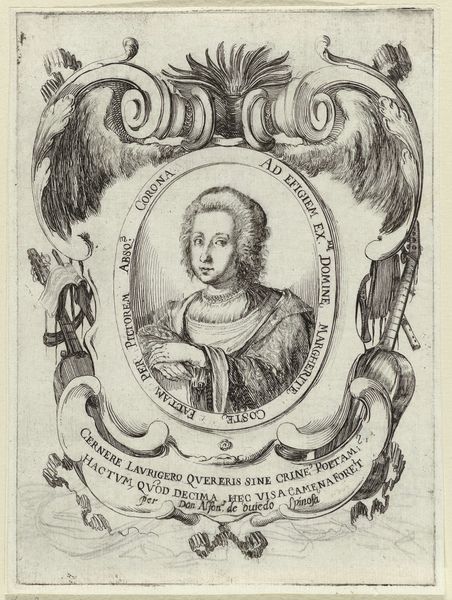
engraving
#
portrait
#
baroque
#
old engraving style
#
portrait reference
#
limited contrast and shading
#
portrait drawing
#
engraving
Dimensions: height 228 mm, width 168 mm
Copyright: Rijks Museum: Open Domain
Curator: Look at the severity in this etching, “Portret van Maria von Jever”, dating, if I'm correct, to somewhere between 1635 and 1702. It’s held here at the Rijksmuseum. What's your first reaction? Editor: Austere elegance. I love how contained she seems, framed by the floral wreath. A sort of poised, quiet defiance radiates from the piece, doesn't it? Curator: Absolutely. You know, engravings like this one, done by Pieter Philippe, they were so crucial for distributing imagery. It let folks far and wide have a glimpse of power and influence. Maria von Jever herself, being depicted, controlled land in Ostfriesland in what's now northern Germany. Her domains stretched quite wide, according to the etching's inscriptions. Editor: Inscriptions that almost appear as a form of protest. Look how the text is literally intertwined with the heraldry and surrounding ornamentation; she stakes her claim so vividly and in language designed to impress. This engraving becomes an assertion of not just her status, but perhaps her right to it. Curator: Good point. Given that Maria ruled during a time of immense upheaval—the Thirty Years’ War ravaged Europe, not so far removed geographically or politically—do you see the fur stole and elaborate headdress less as vanity, and more a symbol of unshakeable power, regardless of conflict? Editor: Precisely. Think about it. Women in positions of power were so often painted, carved, or rendered primarily as symbols or extensions of patriarchal power. This portrayal of Maria feels subtly but insistently self-authored, pushing back on those constraints through very careful staging. What else stands out? Curator: I am quite enamored with the tiny details around her head piece that looks almost angelic; perhaps it is intended to serve this effect? Editor: Hmm, I wouldn't go quite that far, but perhaps an appeal for some divine blessing during turbulent times is a plausible interpretation. She strikes me more as practical and assertive, than passive. Curator: Well, it's just a little visual intrigue amidst all this seriousness, something to think about as one passes by. It serves its purpose. Editor: Agreed, this tiny glimpse into the complex performance of power is something I won’t soon forget.
Comments
No comments
Be the first to comment and join the conversation on the ultimate creative platform.
